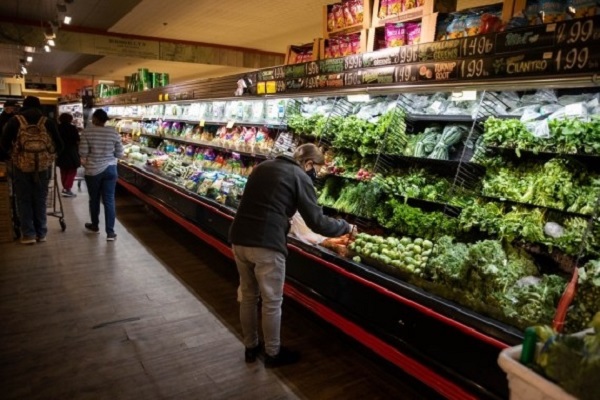
Rome, (Asian independent) World food commodity prices declined modestly in May for the second consecutive month, although wheat and poultry prices pushed higher, the UN’s Food and Agriculture Organization (FAO) reported on Friday.
The FAO Food Price Index averaged 157.4 points in May 2022, down 0.6 per cent from April. The Index, which tracks monthly changes in the international prices of a basket of commonly-traded food commodities, however, remained 22.8 per cent higher than in May 2021.
The FAO Cereal Price Index increased by 2.2 per cent from the previous month, led by wheat prices, which were up 5.6 per cent from April and 56.2 per cent from their corresponding value a year earlier.
International wheat prices, averaging only 11 percent below the record high reached in March 2008, rose in response to an export ban announced by India and concerns over crop conditions in several leading exporting countries as well as reduced production prospects in Ukraine due to the war.
International rice prices also rose across the board, while coarse grain prices declined by 2.1 per cent, with maize prices dropping by even more in step with slightly improved crop conditions in the US, seasonal supplies in Argentina and the imminent start of Brazil’s main maize harvest.
The FAO Vegetable Oil Price Index declined by 3.5 percent from April, while still markedly higher than its year-earlier level. Prices dropped for palm, sunflower, soy and rapeseed oils, due in part to the removal of Indonesia’s short-lived export ban on palm oil and sluggish global import demand for soy and rapeseed oils in view of elevated costs in recent months.
“Export restrictions create market uncertainty and can result in price spikes and increased price volatility, the decrease in oilseeds prices shows how important it is when they are removed and let exports flow smoothly,” said FAO Chief Economist Maximo Torero Cullen.
The FAO Dairy Price Index also dropped by 3.5 per cent month-on-month. Prices of milk powders declined the most, linked to market uncertainties from the continued Covid-19 lockdowns in China, while robust retail sales and high demand from restaurants in the Northern Hemisphere prevented cheese prices from falling significantly despite weakened global import demand.
Butter prices also dropped on account of a weaker import demand amid improved exportable supplies.
The FAO Sugar Price Index declined by 1.1 per cent from April, as a bumper crop in India buoyed global availability prospects.
The weakening of the Brazilian real against the US dollar, along with lower ethanol prices, also pressured world sugar prices downwards.
Meanwhile, the FAO Meat Price Index set a new all-time high, increasing by 0.6 per cent in May even as world bovine meat prices remained stable and those of pig meat fell.
The climb was driven by a steep increase in international poultry meat prices, reflecting continued supply chain disruptions in Ukraine and recent cases of avian influenza amid a surge in demand in Europe and the Middle East.







